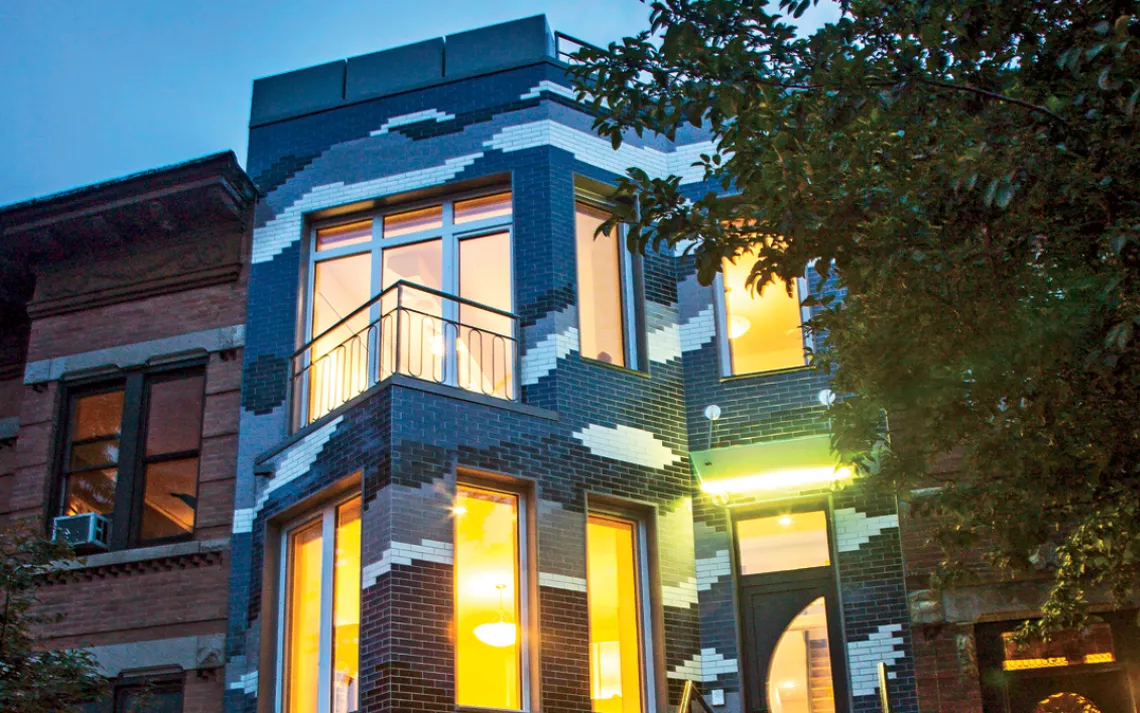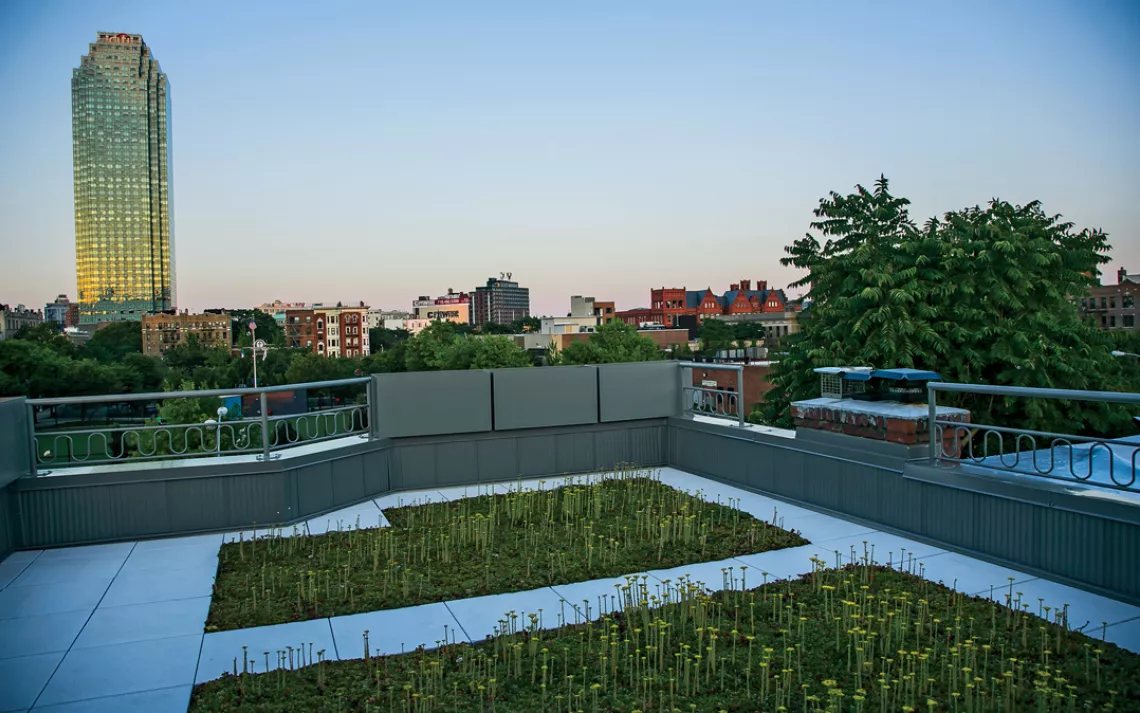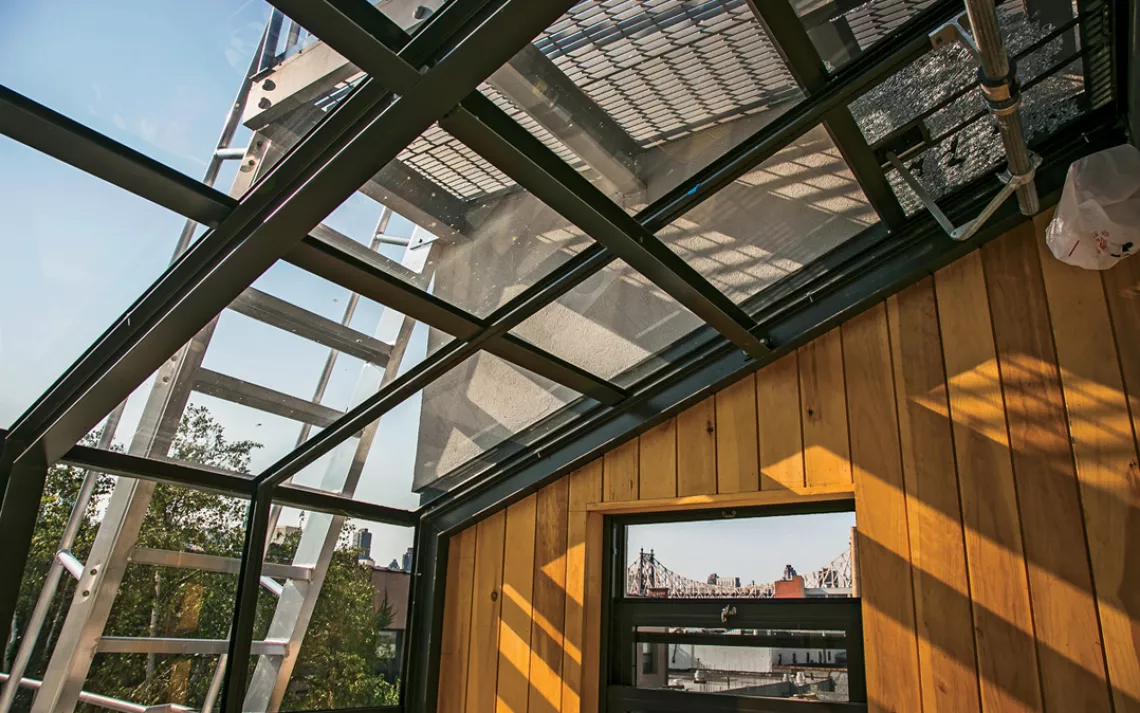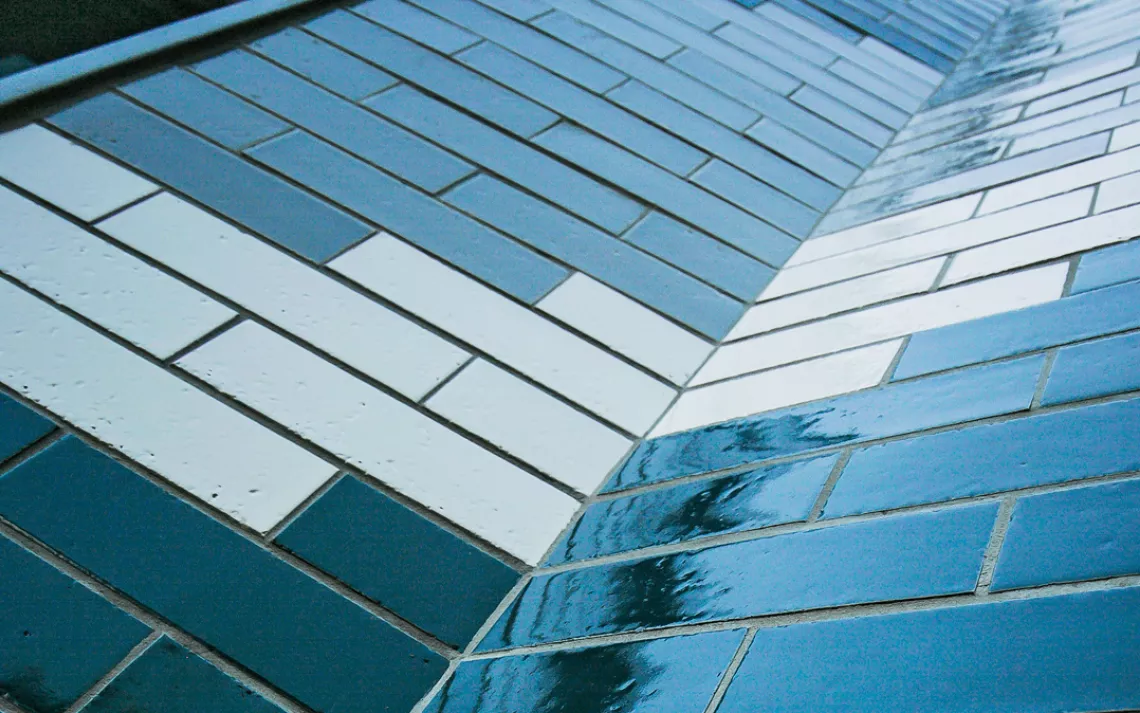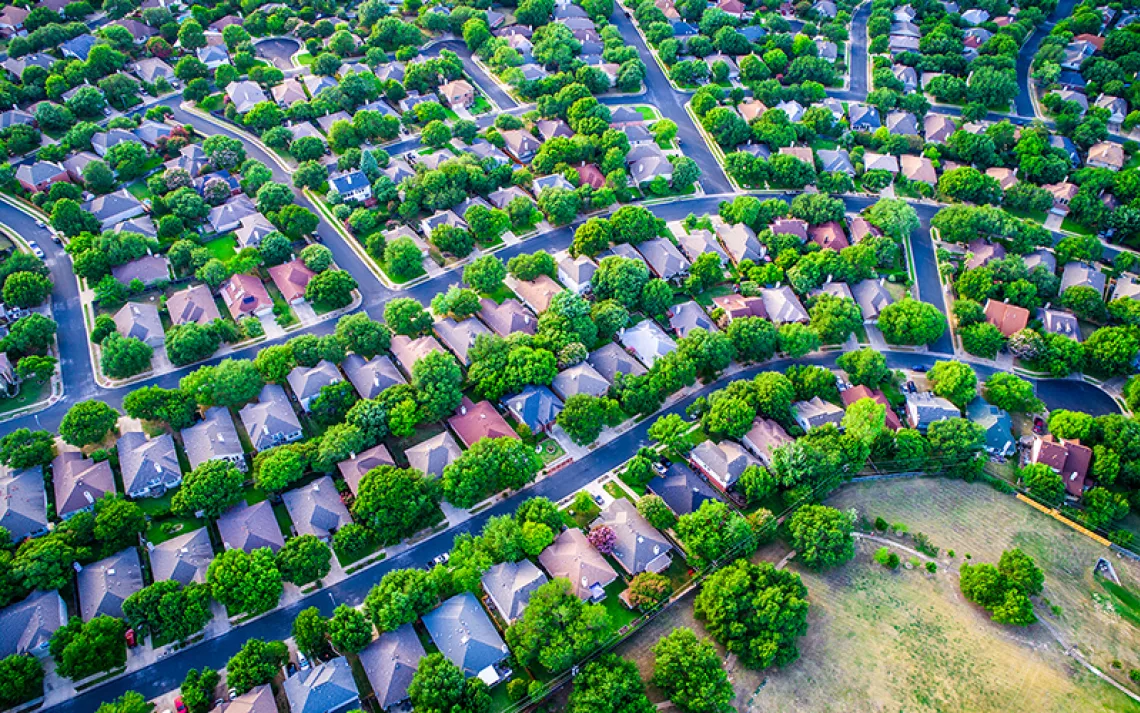One New York City Rowhouse Takes on a Changing Climate
It was only supposed to be a refurbishment. Then the city informed architect Thomas Paino and his partner, Peter Johnson, that their 1903 row house in Long Island City, Queens, would need to be raised three feet above the floodplain because it was at risk from storm surges and rising sea levels. That meant rebuilding entirely, so they figured they might as well make it an ultra-low-energy "passive house." At some point between installing the green roof, the solar water heater, and the vegetable garden, they realized they were well on their way toward making a statement. Which is how they found themselves living on the top two floors of what they call Climate Change Row House.
The house has garnered much attention, although not for its laudable sustainability. Real estate blog Curbed New York, at odds with the exterior's loud pattern of black, gray, and white tiles, dubbed it the "Ugliest House in Queens," a moniker that made its way into the New York Times. "All of the upset was over the design of that facade," Paino says, shaking his head. "But to me, the real revolution is what's happening behind the wall." (For the record, the original building had suffered a horrific 1970s-era renovation.)
Tenants who rent the two-bedroom ground-floor apartment will quickly notice something else about that wall: Despite boasting large picture windows, it blocks out nearly all traffic noise.
But what really sets their new home apart, Paino and Johnson say, is the lifestyle it allows them to lead. Not many New Yorkers can harvest fresh produce from their rooftop greenhouse while watching the sun set over the Empire State Building.
"In New York City, you can live in a big building and not be aware of the climate at all," Paino says. Until disaster strikes, that is. The renovation was under way when Superstorm Sandy hit in 2012, and now Paino and Johnson hope their example can inspire their neighbors to adopt even one of their emissions-reducing practices, be it updating their insulation, hanging their laundry from a clothesline, or installing a solar panel. That last one is "just basic," Johnson says. "Why use fossil fuel?"
 The Magazine of The Sierra Club
The Magazine of The Sierra Club
